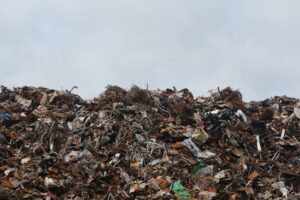Original approach to toxic waste
Smokers around the world buy roughly 6.5 trillion cigarettes each year. The average weight of a cigarette butt is 0.2 g; more than 1.1 million tons of them are produced annually. Cigarette waste contains extensive amounts of toxic chemicals, carcinogens, microplastic fibres, and radioactive elements that need special attention.
“In our research group, we are working on the topics of recycling and waste management, therefore we are always looking for the waste, which is present in huge amounts and has a unique structure. Cigarettes are made of three components – tobacco, paper and a filter made of cellulose acetate fibres – and are a good source of raw materials and energy. Plus, cigarette butts are easy to collect as there are many systems and companies for collecting this waste in place,” explains Yousef.
Although there have been attempts to recycle cigarette waste for the extraction of raw materials, the majority of studies focused on the investigation of thermal degradation of the individual components. Lithuanian scientists in their experiments were treating cigarette butts as a mixture, and, according to them, it is an original approach.
“There are studies which, similarly to us, are using pyrolysis as a method but they are applying it to filter components only. In this case, the pre-treatment of the material is needed to separate all components. Since tobacco is a toxic waste, the disposal of it requires special care, and due to the technologically complicated process to separate the components of the cigarette waste, this is not economically feasible,” says Yousef, a chief researcher at KTU Faculty of Mechanical Engineering and Design.
All products have real applications
After a series of pyrolysis at different temperatures experiments, the researchers were able to extract oil (38–39.5 wt%), char (25.7–27.7 wt%) and gas (33–36.4 wt%) from cigarette waste. The char product with a porous structure was very rich in calcium (up to 32 wt%).
“All the products have real applications. Char, which, in our case is porous and very rich in calcium can be used for fertilisers, or wastewater treatment as an absorbent, and energy storage. Gas can be used for energy purposes. Last, but not least is oil, rich in triacetin, which can be used as an additive to biodiesel to reduce the cost,” says Yousef, who believes that the technology has great upscaling possibilities.




